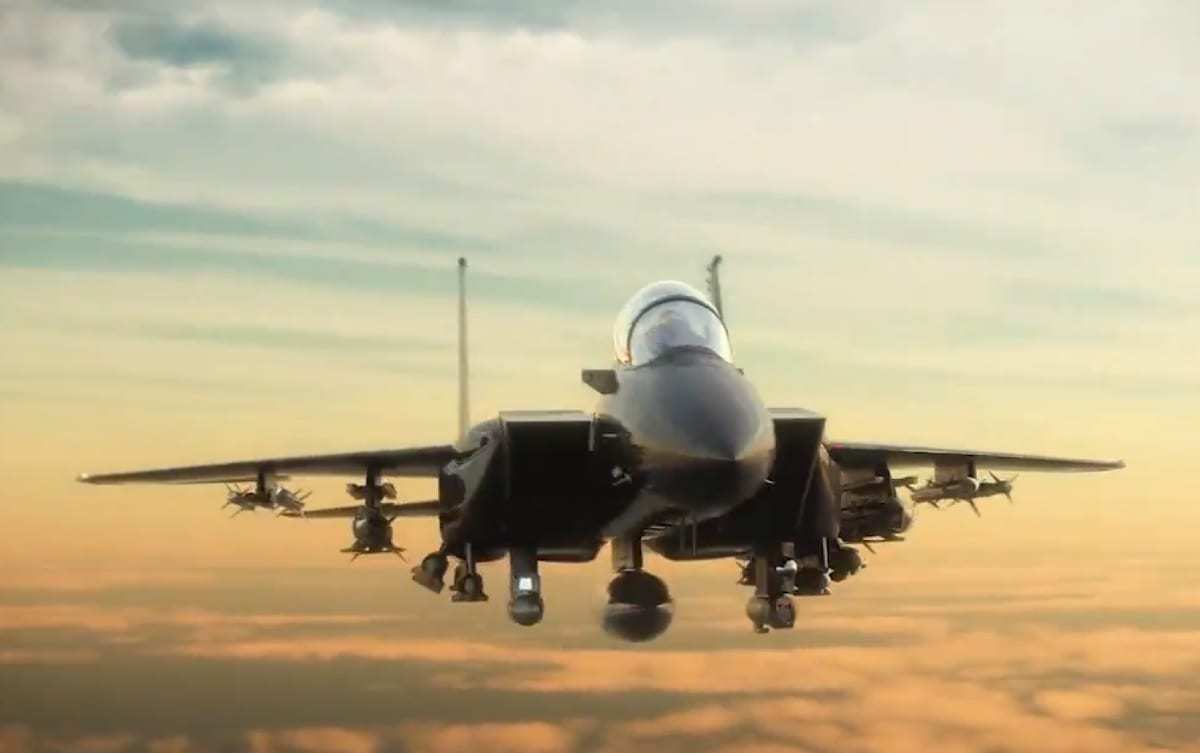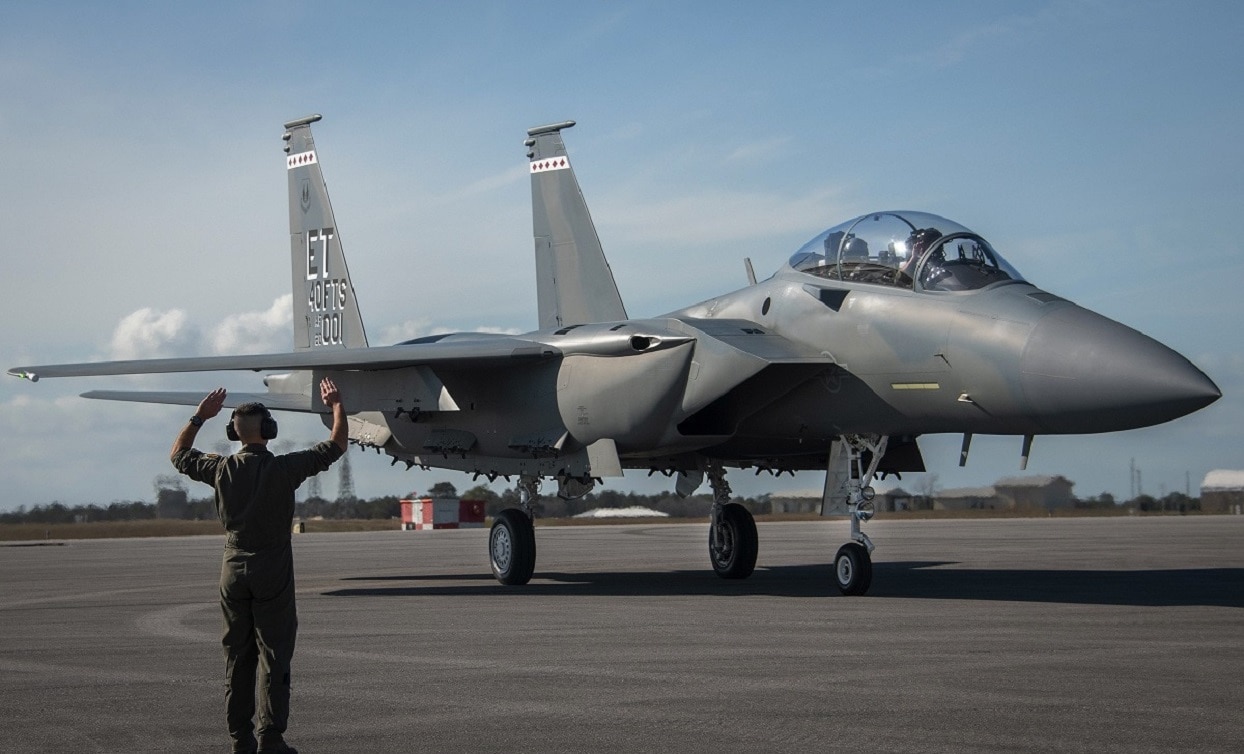The idea behind the F-15EX is a good one, at least on paper, that is. Upgrade a tried-and-true platform to make it a 4.5 generational aircraft that fits between the Air Force’s F-22 and F-35 and older F-16 and F-15 Strike Eagle.
But think tank analysts have wondered whether time, money, and resources should go into the F-35 program instead. Now a government watchdog has criticized the acquisition practices of the F-15EX and this critical eye has identified lessons learned for the other acquisition programs in the U.S. military.
What’s Good About the F-15EX
The F-15EX has a new survivability system that is designed to improve performance against Chinese and Russian fighter-interceptors. It has a digital flight control which the 48-year-old F-15 did not have. The original platform has proved its mettle in the Middle East, and it has especially demonstrated much success with the Israeli Air Force.
Now the F-15EX has shown the capability it can fly with other airplanes in the Northern Edge exercise in the spring of this year.
There Is Some Bad News
That’s the good news.
The bad news is that there is also a scathing report written by the watchdog Project on Government Oversight, or known as POGO, that criticizes the defense acquisition practices of the F-15EX program. The nonprofit’s Center for Defense Innovation analyst Thomas Christie believes that the Air Force chose to not “test before you buy,” and is instead combining the wrong acquisition phases at the wrong time. This means the Air Force is acting to “merge the plane’s development and its operational tests,” according to Christie.
This practice is damaging because it is allegedly leading to less transparency and speeding up the program without the added realism of adequate testing.
Christie said in his last report that the Air Force should find flaws with a series of prototypes that employ different testers. This ensures that all the mistakes and kinks are ironed out before it is deployed.
“Why? Because development tests are done by engineering test pilots, on behalf of the developer, to uncover any deficiencies in meeting engineering specifications, then to cure and retest those deficiencies as quickly as possible. These aims are often incompatible with operational testing, which is necessarily done on behalf of the combat user, by tactical pilots evaluating the combat suitability of the fully production-ready, deficiency-free plane under stressful, realistic, non-engineering conditions,” the analyst said.
Christie thinks the F-15EX program is using semantics such as describing itself as “Middle Tier Acquisition” to confuse oversight efforts by Congress and the Department of Defense. The POGO watchdog group believes these evasive buzzwords allow the F-15EX to “begin production before the weapon is operationally tested or before the design and development are even completed.”
A Fair Critique?
Christie and POGO might be acting too alarmist for a few reasons.
The F-15EX is reportedly testing successfully – so far. It will likely not go the way of the shocking cautionary tale of the failed Army Future Combat Systems. The personnel staffing the F-15EX are probably not acting maliciously. But the use of vague descriptions could confuse Congress and regulatory practitioners in the Department of Defense.

F-15 X (Image: Boeing)

F-15EX Screenshot from Boeing Video
POGO is correct to be concerned with future programs because the F-15EX is setting a concerning precedent with merging the development of the airplane with testing instead of a phased testing approach before the fighter is purchased.
If something goes wrong with the F-15EX, such as schedule creep and cost overruns, POGO could say I told you so.
1945’s new Defense and National Security Editor, Brent M. Eastwood, PhD, is the author of Humans, Machines, and Data: Future Trends in Warfare. He is an Emerging Threats expert and former U.S. Army Infantry officer.

